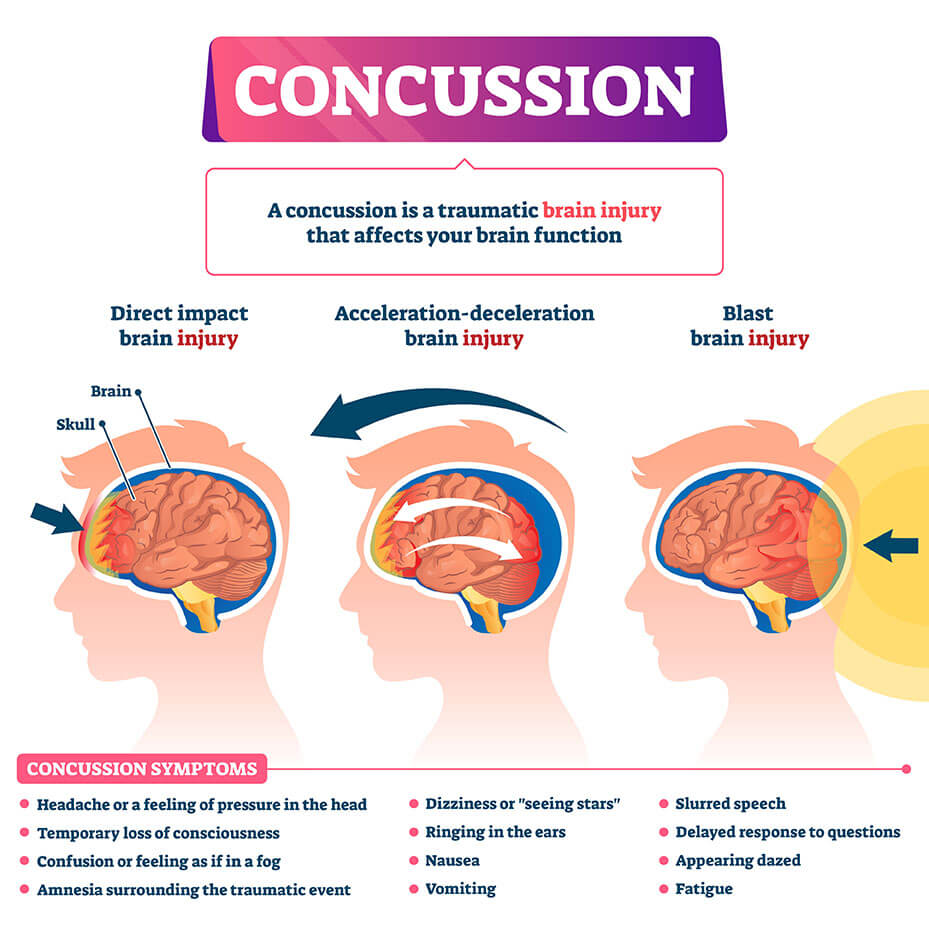Concussion is described as a type of traumatic brain injury—or TBI—caused when an external force acts on the body and causes the head or brain to rapidly move back and forth. This sudden movement can cause the brain to bounce or recoil inside the skull, creating chemical changes and sometimes even damaging or stretching brain cells. Often symptoms of concussion can be experienced even if the nature of the injury is extremely mild, like bumping your head on something, but can also occur from indirect trauma to the head such as whiplash associated injuries.
Concussions are also extremely common within contact sports such as rugby league and rugby union, and even commonly in other sports such as cricket from a batsman being struck in the helmet by a cricket ball. Due to the nature of sport nowadays and the awareness behind Concussion and the effects it has on the brain, many sports are now implementing Head Injury Assessments via team and independent doctors to aid in the diagnosis and therefore protection and prevention from the damages associated with concussion within sport.

Some of the Signs and symptoms include, but are not limited to:
Concussion signs observed
Can’t recall events prior to or after a hit or fall
Appears dazed or stunned
Forgets an instruction, is confused about an assignment or position, or is unsure of the game, score, or opponent
Moves clumsily
Answers questions slowly
Loses consciousness (even briefly)
Shows mood, behaviour, or personality changes
Concussion symptoms reported
Headache or “pressure” in head
Nausea or vomiting
Balance problems or dizziness, or double or blurry vision
Bothered by light or noise
Feeling sluggish, hazy, foggy or groggy
Confusion, or concentration or memory problems
Just not “feeling right” or “feeling down”
Depending on the category of concussion, symptoms may vary in duration from anywhere between a few days to months. It is important that an individual participates in a gradual return to normal daily living based on how their symptoms allow. Once this has been achieved, return to school or work is normally allowed with modifications to hours or tasks depending on the cognitive impacts they have on an individual.
From a sports specific point of view, the return to play protocol is a little more complex and requires more attention to detail regarding progressions. Initially, light aerobic activity will be implemented and then gradually progressed to moderate intensity exercise provided the individual is symptom free.
Then, high intensity, non-contact exercises such as sprinting, weightlifting and sport specific drills can begin, and once this phase has been completed symptom free, full contact practice may commence. Finally, once the athlete has had sufficient exposure to full contact and game scenarios at training, they may return to the sport once a clearance has been obtained by a relevant health professional.
The long term effects of concussion are still being researched, however numerous studies have confirmed that there are long term, and in some cases permanent, cognitive and neuropsychiatric consequences from repetitive head-impact exposure, therefore signifying the importance of managing concussion conservatively to ensure a safe return to work, sport or even normal daily living.
Leighton Milburn – Physiotherapist
